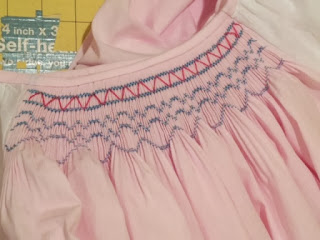Today's tute will be on the actual attaching part. You'll need to have your quilt completely finished at this stage. The first thing I did was to make a button hole right in the center of the circle part of your dresden plate. Obviously you'll need your button first. I chose a 1 1/2" button so my button hole is rather large.
Then you'll place your dresden on your quilt where you want it (I chose the very center) and mark the place for your button hole and stitch it on. Then button your dresden to the quilt.
You'll need enough snaps for every blade on your dresden. Mine has 20 blades, so I bought 24 snaps.
I chose metal over plastic, because they may get some use.
Now start stitching a snap onto every point on the dresden. BE VERY CAREFUL IN WHICH SNAP YOU PUT ON YOUR BLADE. Make sure it is the right side. I stitched all 20 on my dresden before I realized they were on the wrong side! Get them pretty close to the edge. Start on one side and do 3 or 4 blades, then go across on the opposite side and do 3 or 4 there. This ensures you get a snug fit with no gaps. When those are finished, move on to another 3 or 4, then do the opposite side. Keep going until they are all stitched on. Keep the dresden buttoned through the whole process.
A little hint in stitching these things on. It's hard to get the needle to go up through the fabric and into that tiny little hole. So start in one hole and stitch through the hole beside it.
Then go into the fabric and come up in the hole from where you started.
I made four stitches with double thread in those two then repeated for the other two. It really sped up the process.
Once you have all the snaps on the top, you'll stitch the bottoms on. If you have your own way of matching the snaps, then use it. If not, this is how I matched mine. I used a white pencil and scratched it over the tip of the snap on the dresden.
You can see the white on the tip.
Then pressed it into the quilt. See that little white dot?
Place the snap over that white dot and stitch it on. Once you get the first one, snap it down before you mark the next one. Then snap that one down before you mark another, and so on. They will look like this. I unsnapped so you could see. I also unsnapped to stitch them on to get the plate out of the way.
Snap them all down.
And you are finished. Now stand back and ooh and ahh over your new removable dresden plate quilt.
I used the left over ties to make my binding (I washed them first, since it didn't matter if the scraps got messed up).
And the back.
I hope you found this information helpful. If I didn't make anything clear, please feel free to comment or email me.
Angela















 I
I




























